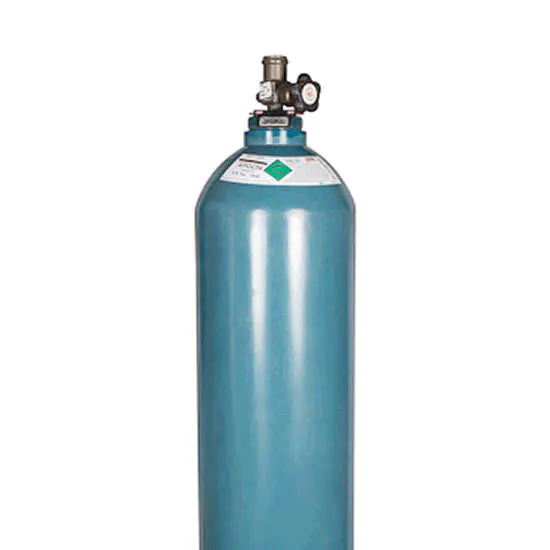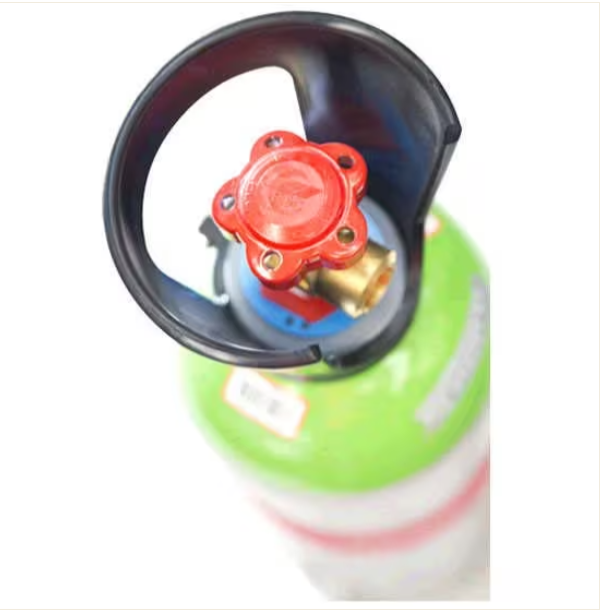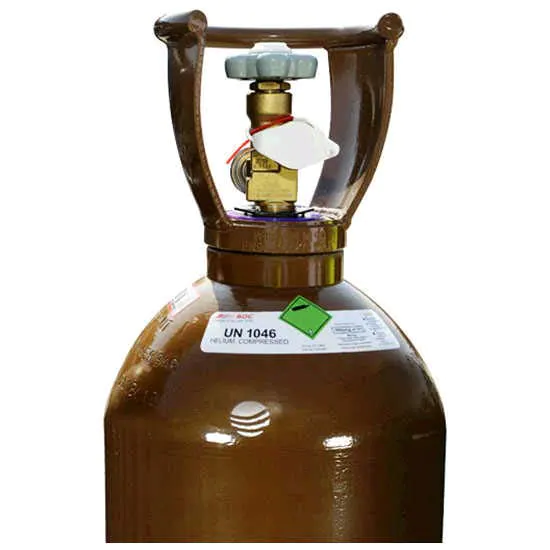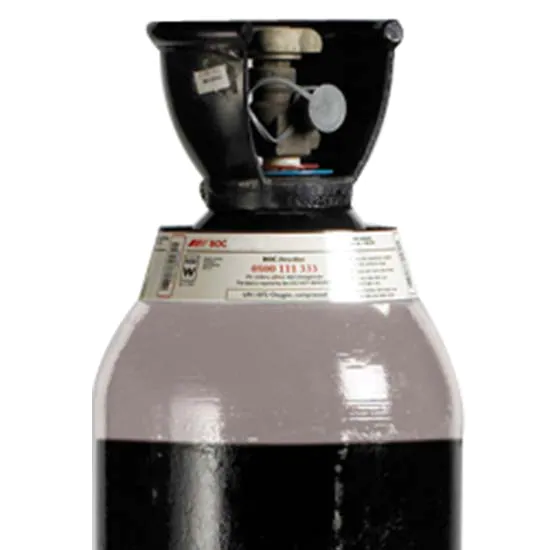$235.18
Key Features:
A refrigerant is a working fluid used in the refrigeration cycle of air conditioning systems and heat pumps where in most cases they undergo a repeated phase transition from a liquid to a gas and back again. Refrigerants are heavily regulated due to their toxicity, flammability and the contribution of CFC and HCFC refrigerants to ozone depletion and that of HFC refrigerants to climate change. Food Grade Argon Gas cylinder features BS341 No. 3 (5/8” BSP female right hand cone recessed), with multiple cylinder size options available.
Refrigerants are used in a direct expansion (DX) system to transfer energy from one environment to another, typically from inside a building to outside (or vice versa) commonly known as an “air conditioner” or “heat pump”. Refrigerants can carry per kg 10 times more energy than water and 50 times more than air. Food Grade Argon Cylinder For sale.
In some countries, refrigerants are controlled substances due to high pressures (700–1,000 kPa (100–150 psi)), extreme temperatures (−50 °C [−58 °F] to over 100 °C [212 °F]), flammability (A1 class non-flammable, A2/A2L class flammable and A3 class extremely flammable/explosive) and toxicity (B1-low, B2-medium & B3-high), as classified by ISO 817 & ASHRAE 34. Buy Food Grade Argon Cylinder Gas Online
Refrigerants must only be handled by qualified/certified engineers to the relevant classes of refrigerant (in the UK, C&G 2079 for A1-class, amd C&G 6187-2 for A2/A2L & A3 class refrigerants).
In both industrial and domestic and commercial refrigeration, refrigerant gases move through a circuit. This circuit has a low-pressure zone and a high-pressure zone, in which the refrigerant is cooled and heated, respectively.
Natural refrigerant gases
The most important natural refrigerant gases for industrial refrigeration are ammonia (NH3) and carbon dioxide (CO2). In addition, we must also highlight sulfur dioxide (SO2), which was used at the beginning of the 20th century in small refrigeration equipment. Next, we will talk about each of them and also about propane gas.
Ammonia
Since 1876, ammonia has been the most widely used refrigerant for cooling large cold rooms. The ASHRAE classification assigns ammonia the code R-717. This is a highly toxic and corrosive gas. Therefore, refrigeration installations that use this refrigerant must comply with strict safety measures.
With ammonia, temperatures as low as -70 °C can be reached in refrigeration plants by absorption. On the other hand, using mechanical compression systems, temperatures of -40 °C can be reached. Ammonia refrigeration evaporators work at an average pressure of 20 psig, while condensers work at about 155 psig.
On the other hand, the boiling point of ammonia at atmospheric pressure is -33 °C, but the critical temperature is 133 °C. Also, the freezing temperature of ammonia is -78 °C.
Ammonia has an ozone depletion potential (ODP) equal to zero (0). On the other hand, the global warming potential (GWP) of ammonia is also zero. All the mentioned characteristics make ammonia an excellent natural and ecological refrigerant.
Carbon dioxide
Carbon dioxide, also known in the ASHRAE standard as R-744, is a much less toxic and corrosive refrigerant gas than ammonia. However, the use of its thermodynamic qualities is achieved at higher working pressures. Consequently, it requires more robust compressors, evaporators for refrigeration, condensers, and pipes.
CO2-based industrial refrigeration systems work in a subcritical or transcritical regime, although the latter requires relatively more complex installations.
Sulfur dioxide
In the mid-1930s, sulfur dioxide (SO2) was used as a refrigerant gas in small domestic refrigerators. However, it was rapidly displaced by chlorofluorocarbon-based synthetic refrigerant gases. The main causes of such substitution were its high toxicity and corrosivity.
Propane
Propane is a refrigerant gas derived from petroleum and has excellent thermodynamic properties. Its main disadvantage is that it is highly flammable, which requires certain safety conditions in case of leaks. However, it has the advantage of having a very low price.
In the ASHRAE nomenclature, propane is known as R-290 and is widely used in industrial refrigeration systems. In addition, it is a refrigerant gas with a PAO equal to zero and a GWP of just 3. Therefore, it is a very ecological alternative.
Synthetic refrigerant gases – Food Grade Argon Cylinder
By 1930, refrigeration companies understood that natural refrigerants were never going to allow them to expand refrigeration to homes and small businesses. In other words, apart from the high toxicity and corrosiveness of almost all natural refrigerants, their characteristics did not allow compact equipment to be built. Consequently, thanks to great research and development efforts, the first synthetic refrigerants emerged.
At the time, these new coolants were the closest thing to the ideal coolant. In this way, dichlorodifluoromethane (CCl2F2) was created, which is also known in the ASHRAE standard as R-12. However, over the years, it was determined that fluorocarbon-based refrigerants were damaging the ozone layer and contributing to global warming. Consequently, in the Montreal Protocol (1986), its replacement was agreed upon at the global level.
R-12 was replaced by chlorodifluoromethane (HCFC), which is also known as R-22. However, this synthetic refrigerant gas was quickly replaced by a new generation of HFC (hydrofluorocarbon) gases, which cause less harmful effects on the environment.
R-134a, one of the most used HFC gases today: This HFC refrigerant has zero ozone depletion potential (ODP). On the other hand, the global warming potential (GWP) is 1430. When R-134a is used in compressors designed for R-12, mineral oil must be replaced by synthetic oil based on polyester (POE).
R-134a can in turn be replaced by a more modern gas based on hydrofluoro olefins (R-513A). This state-of-the-art refrigerant gas has a GWP of 630, which is much lower than that of R 134a.
R-152a for industrial refrigeration: R-152a is a difluoroethane-based refrigerant gas, which has a GWP of 124 and does not destroy the ozone layer. This refrigerant has thermodynamic properties superior to R-134a and is widely used in chiller-type refrigeration systems.
Zeotropic mixtures of refrigerant gases
All the refrigerants mentioned above are chemically pure substances. Therefore, they have a single boiling and condensation point at a certain pressure and temperature. However, zeotropic refrigerant mixtures are compounds formed by two or more pure refrigerants with different boiling and condensation points. These mixtures form the 400 series of the ASHRAE classification.
The most widely used zeotropic mixtures today are the following: R-404A, R-410A, R-450A, and R-448A. In all of them, the slip produced by the different boiling and condensation points of the substances that make up each mixture is taken into account.
Be the first to review “Food Grade Argon Cylinder (Food Fresh Ar)” Cancel reply
Related products
Compressed Air
Hydrogen
Carbon Dioxide
Carbon Dioxide













Reviews
There are no reviews yet.